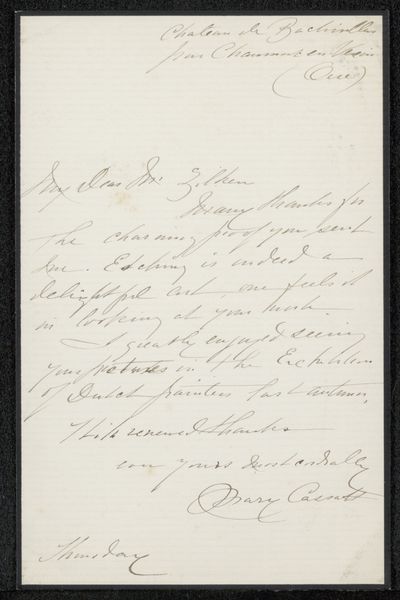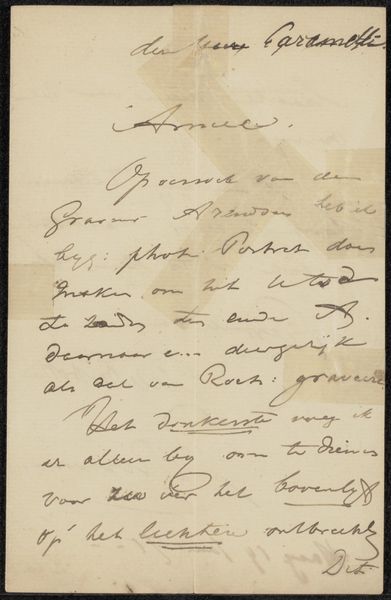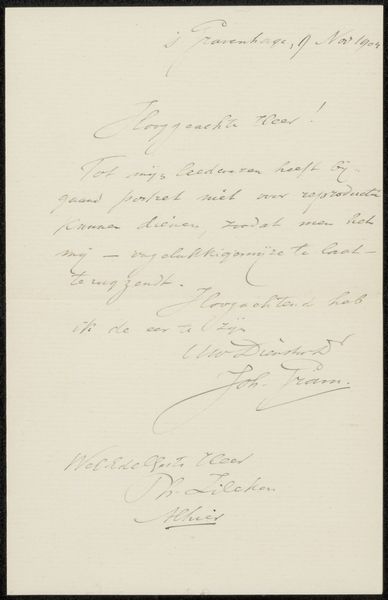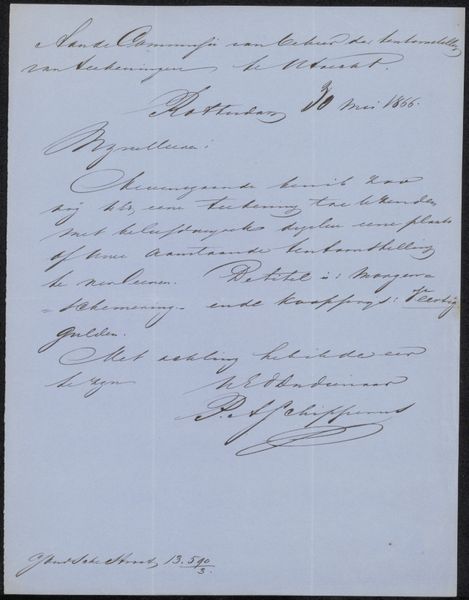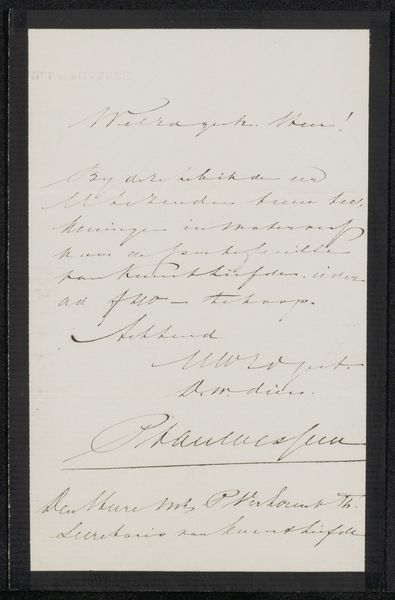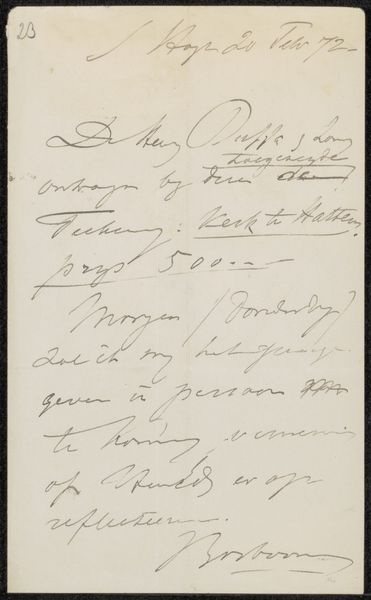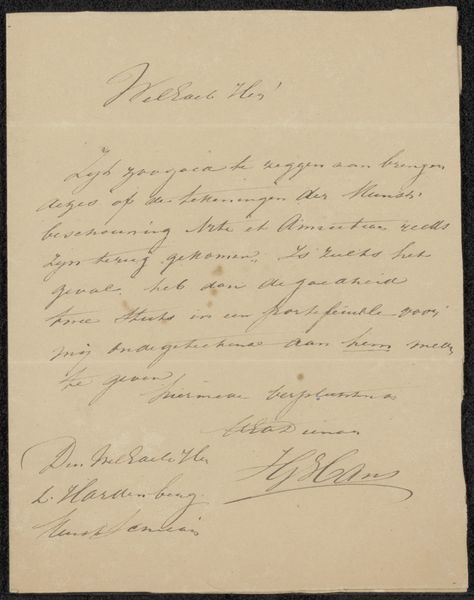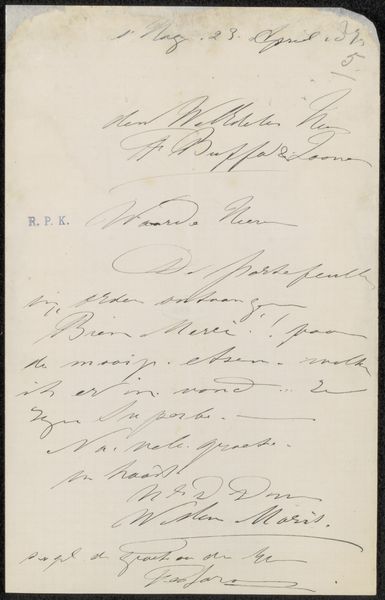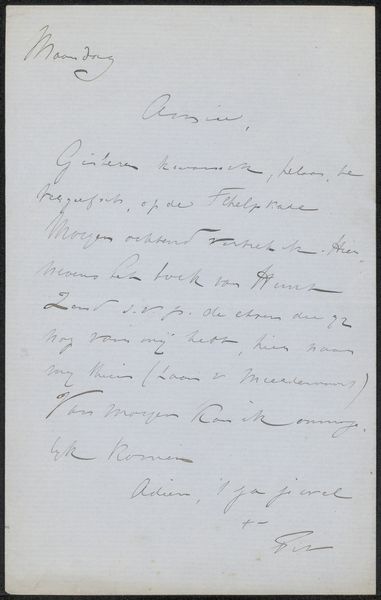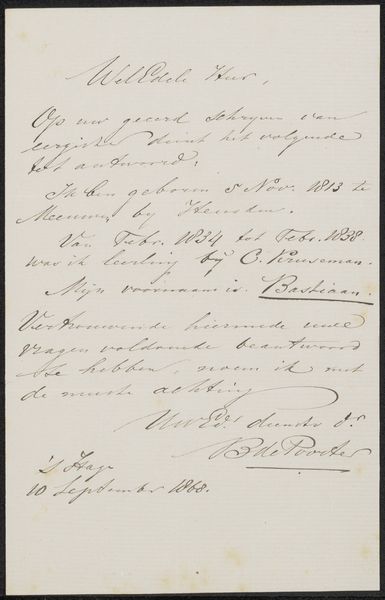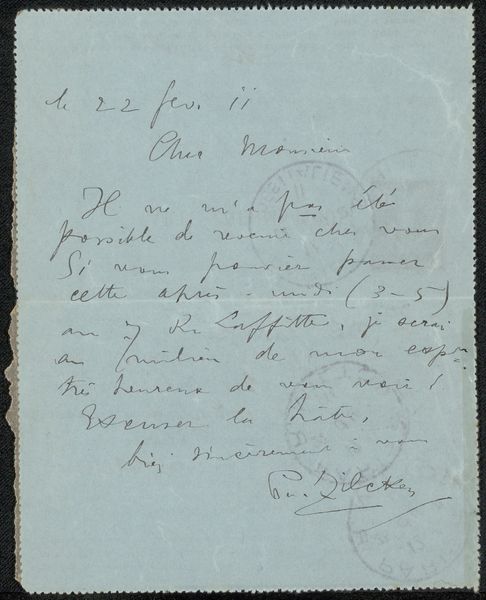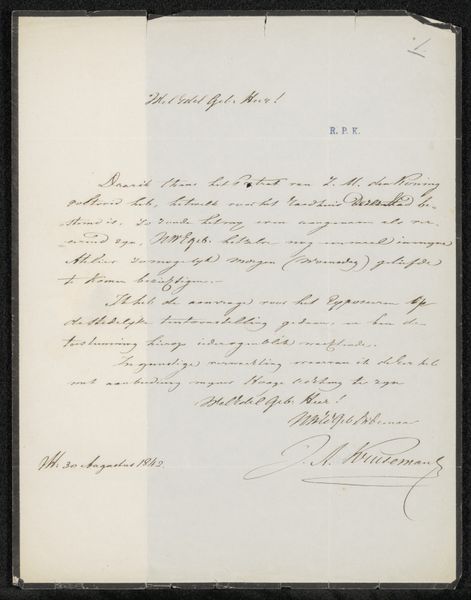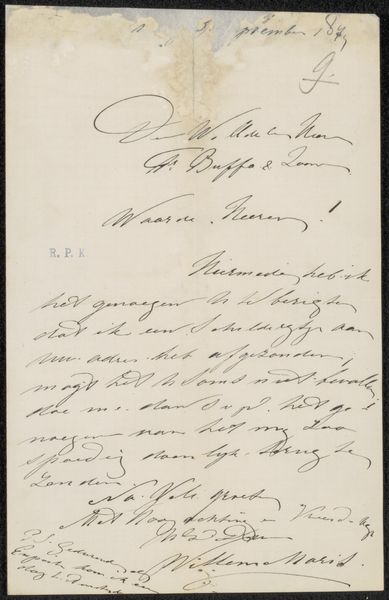
drawing, paper, ink
#
portrait
#
photo of handprinted image
#
drawing
#
type repetition
#
aged paper
#
ink paper printed
#
hand drawn type
#
paper
#
personal sketchbook
#
ink
#
hand-drawn typeface
#
ink colored
#
sketchbook drawing
#
sketchbook art
Copyright: Rijks Museum: Open Domain
Editor: This is "Brief aan Philip Zilcken," a letter by Catharina Hendrika Maris-Horn, possibly from 1899. It's an ink drawing on paper, giving it a fragile, intimate feel. What significance do you see in the handwritten form of communication itself? Curator: Well, handwriting itself carries the weight of intention. In this letter, the curves and pressures of the ink form more than just words, they echo the personality, emotions, and immediacy of the sender. Before the age of ubiquitous type, handwriting was the most personal form of inscription – a direct link between the hand, the mind, and the message. Look at the flourishes – do they remind you of anything? Editor: I see that… the 'J' in her signature, for instance, almost becomes a stylized floral element. So it's about conveying information but also presence? Curator: Precisely. Consider the visual language, how each letter contributes to the overall mood. It isn't just a neutral conveyance of text; it’s an intimate exchange where the visual and semantic blend. How might this specific script reflect broader social attitudes towards communication or the author's intent within the context of her time? What does handwriting communicate that typed fonts do not? Editor: It personalizes the communication in a way that’s completely absent today in a text message. I guess seeing handwriting suggests something deeply felt. Curator: Indeed. The imperfect strokes humanize the message. We interpret character in handwriting, whether accurately or not. Perhaps there are symbolic clues here, too—flourishes, slant, pressure, all these have been interpreted in graphology for over a century. But let's also remember context, this is art history, after all! Letters and writing served in Dutch Golden Age paintings as vanitas symbols of earthly transience and also stood for learning. Has this taught you something new about handwritten texts? Editor: Yes! I never really thought of the handwriting as something deliberately carrying emotional significance or artistic intentions, beyond simply the words written. Curator: Hopefully it opens you up to seeing how the emotional power of symbols endures, evolves, and imprints itself onto our present.
Comments
No comments
Be the first to comment and join the conversation on the ultimate creative platform.
